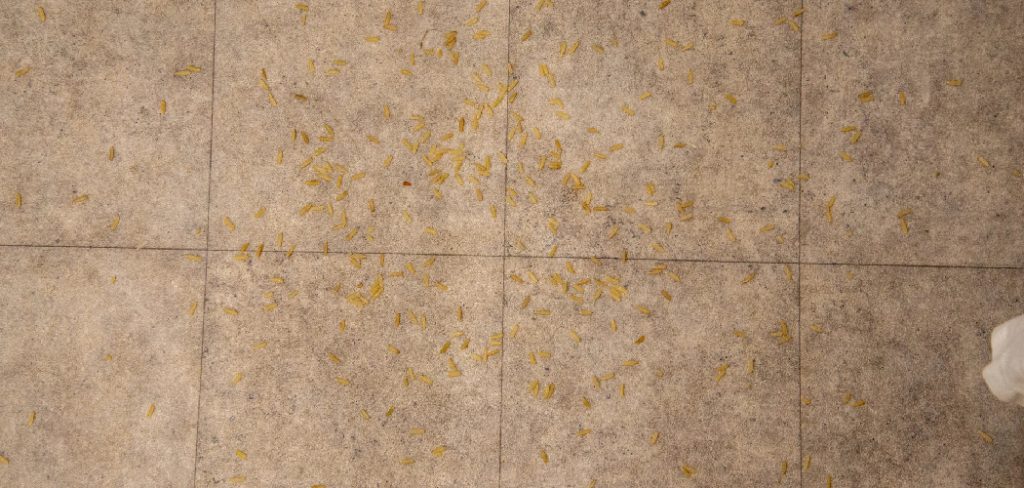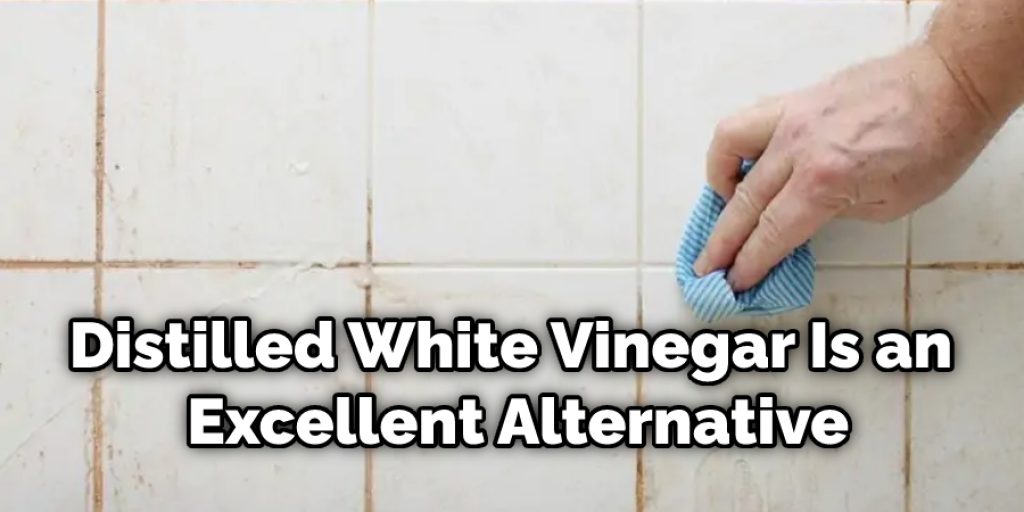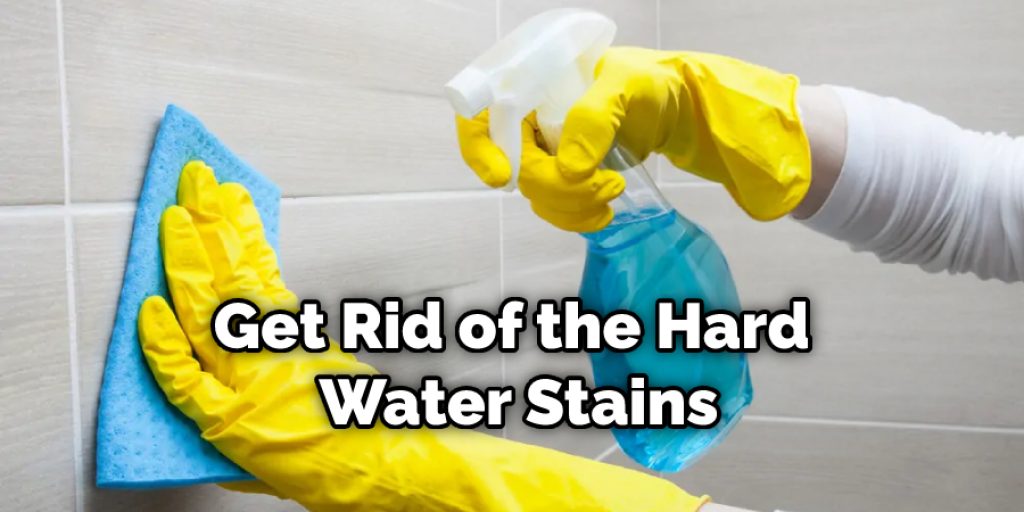How to Remove Limescale From Bathroom Tiles
If your bathroom tiles are looking a little bit on the grimy side, you may be wondering how to remove limescale. Limescale is a buildup of calcium and magnesium that can be difficult to remove once it has formed. However, there are a few methods that you can try to get your tiles looking clean and shiny again.

In this blog post, we will discuss how to remove limescale from bathroom tiles using vinegar, baking soda, and bleach. We will also provide some tips on preventing limescale from forming in the first place. So, if your bathroom tiles need a little bit of TLC, keep reading!
What Causes Limescale on Tiles?
Limescale is caused by minerals dissolved in the water reacting with grout, tiles, and other surfaces. Calcium, magnesium, and iron are the most common minerals that cause limescale. These minerals are naturally present in water or can be added by using hard water for bathing or cleaning. Limescale can build up on surfaces over time, causing them to become discolored or even etched. In extreme cases, limescale can cause plumbing fixtures to become clogged or damaged. There are a few ways to remove limescale from surfaces.
Hard water contains more significant amounts of calcium and magnesium than other types of water, such as distilled water or bottled drinking water. The more minerals, the harder the water is. Water hardness can be measured with a degree of technicality based on how much calcium carbonate (CaCO3) is dissolved in 1 kilogram of water or how many grains per imperial gallon (16.39 liters) is the same amount of calcium carbonate.
Hard water forms limescale because it contains dissolved minerals, mainly calcium and magnesium. These minerals are insoluble (do not dissolve) in water. Hence, they attach to any surface that the water comes into contact with different types of surfaces will tolerate different levels of exposure to hard water. For example, metals such as copper and iron are much more likely to corrode than non-metallic surfaces such as glass or ceramic. Hard water is rarely harmful to health but it causes inconvenience because of the way it interacts with soap to produce scum.
10 Easiest Way on How to Remove Limescale From Bathroom Tiles
1. Scale Removal:
This is not a way to remove limescale. But it does prevent the buildup of limescale on your bathroom tiles. By using a water softener, the calcium and magnesium in hard water will not be able to cause scale buildup on your bathroom tiles or other material . Water softeners are often used in areas with hard water. But if you have soft water and are still having problems with limescale, it’s possible that your water has become harder over time.
2. Vinegar:
Vinegar is an acid and therefore can dissolve some of the limescale deposits, but it won’t remove them all, and it will eat away at your enamel, so you don’t want to leave it on there for very long. Soaking a cloth or leaving it overnight in undiluted white vinegar can help remove limescale, but be sure to rinse it well after use and avoid any direct contact with metal parts. Lemon juice is also an acid, but a milder one than vinegar. You can use it in the same way as vinegar to remove limescale, and it’s less likely to damage your enamel.
3. Limescale Remover:
You can buy limescale remover products that will help remove limescale or calcium buildup from your bathroom tiles. However, there are also some great ways to get rid of hard water stains without harsh chemicals. Hence, it’s worth trying different methods before resorting to an expensive limescale remover product. Vinegar is known to be an effective cleaning agent. You can use vinegar to remove limescale from your bathroom tiles by pouring a cup of white vinegar into a bucket of hot water. Use a sponge or cloth to wipe the tiles down with the vinegar solution.
4. Baking Soda:
Baking soda is another home remedy for removing limescale buildup. Mix baking soda and water to create a paste, apply it on the stained area on your tiles, then scrub with an abrasive pad or cloth until they’ve come off. Be sure to rinse well after cleaning them (and before you use them).
5. Using bleach:
Using bleach will help remove limescale and hard water stains from your bathroom tiles, but it’s best to use a non-bleach alternative such as white vinegar or lemon juice if possible. Also, it’s not recommended that you leave the bleach on the tile for very long because it can damage your grout lines and alter your grout color.

6. Removing Discoloration:
If your bathroom tiles have a yellow or brown discoloration, it may result from the hard water buildup. Typically this is caused by iron and can be fixed with a mixture of hydrogen peroxide, baking soda, and white vinegar.
7. Cleaning From The Inside:
Make sure you keep your drain clear and open and avoid pouring grease and other oils down your drain. This will help prevent limescale buildup and hard water stains from happening in the first place. If you have a garbage disposal, run it regularly to avoid any food scraps or oil buildup inside of it.
8. Use a Bathroom Water Softener:
Adding a bathroom water softener to your bathroom will prevent hard water from causing limescale and will also help prevent it from causing any hard water stains. These can help reduce or even eliminate any skin irritation due to the lack of soap in the hard water.
9. Using Less Water:
Reducing the amount of water you use when you shower helps prevent limescale buildup because there will be less water to dissolve the minerals in your hard water. Also, consider using filtered or distilled water for your bathroom needs so that you take full advantage of the benefits of using soft water.
10. Using Distilled White Vinegar:
Using distilled white vinegar for your bathroom needs is an excellent alternative to chemical-laden limescale remover products. It can help prevent limescale, so you don’t have to worry about it building up on your tiles or changing the color of your grout lines. This is also a non-toxic solution, so there’s no need to worry about using harsh chemicals for limescale removal.

Some Tips and Suggestions
1. Before getting started, let the vinegar do its job overnight.
2. Using a toothbrush can help get into harder-to-clean areas.
3. Ensure the vinegar has been mopped up before getting started with the rest of the instructions because it will burn sensitive skin and could damage your flooring if left too long without being mopped up.
4. If you are not keen on vinegar, tile shops’ commercial products can also help dissolve scale and grime. However, vinegar is a cheaper alternative usually readily available at home or in the shed.
5. Be sure to wear gloves to protect your skin from irritation, and never use a metal scourer as this will damage your tiles.
6. You can also use vinegar as an alternative to chemical-laden limescale remover products for your sink and appliances in the bathroom.
7. When you’re done cleaning, make sure to wipe the floor dry and then mop it with a solution of vinegar and water. The vinegar will help keep any dust or dirt from sticking to your tiles and prevent any new limescale buildup.
You can also check it out to Remove a Bathroom Mirror With Clips
How to Get Rid of Hard Water Stains?
Hard water is mineral-rich water that contains an excessive amount of calcium and magnesium. If you have hard water, then you most likely spend a good amount of time trying to get rid of the hard water stains on your shower walls, sink faucets, and around your bathtub.
The issues with hard water do not stop at your fixtures and tile appearance. Hard water leads to mineral buildup that coats surfaces and prevents soap from lathering, which means you end up using more soap than necessary for cleaning. The soap scum rings around your tub and sinks result of this.

Conclusion
Bathroom tiles can become stained and covered in limescale over time, making them look unsightly. To remove limescale from bathroom tiles using a chemical solution, mix one-part white vinegar with three parts hot water. Pour the mixture into a spray bottle and spray it onto the tile surface.
Let the solution sit on the tile for about five minutes before scrubbing it off with a brush or sponge. Then, rinse the area thoroughly with clean water to remove any residue. In this post, we have discussed how to remove limescale from bathroom tiles using a few methods. We hope you find this information helpful! If you have any questions or want to know more, then feel free to comment below!
You Can Check It Out To Ventilate a Bathroom Without Windows




